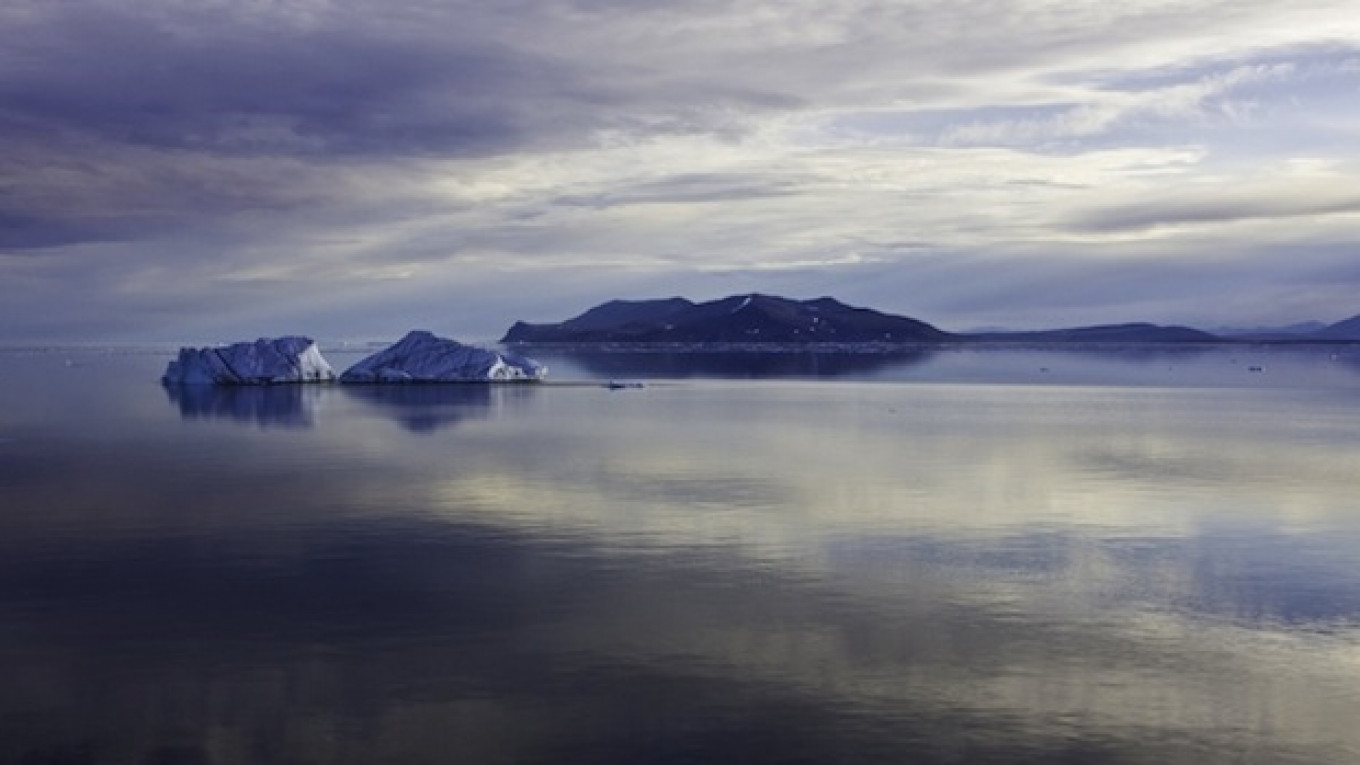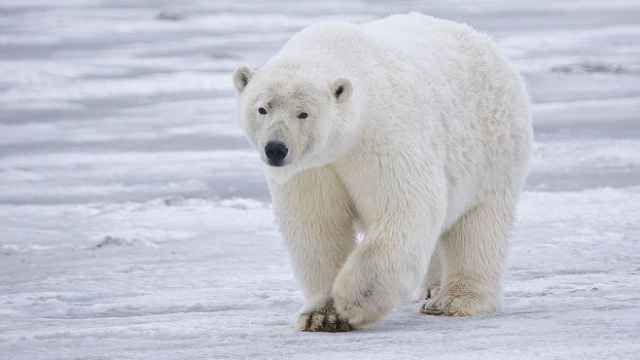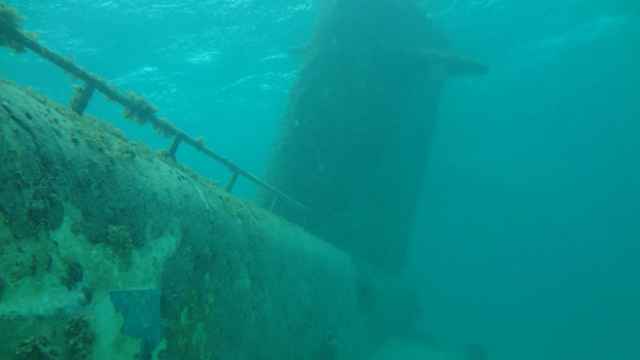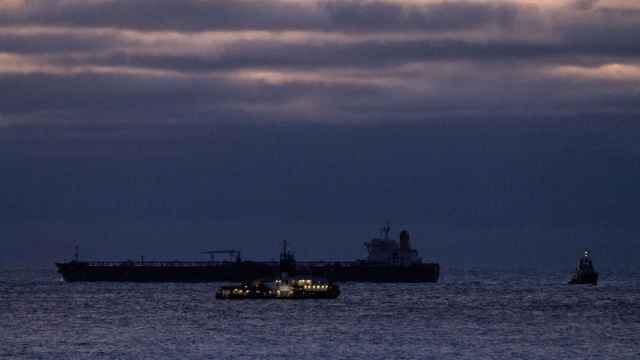While Russia's nuclear bombers have recently set the West abuzz by probing NATO's air defenses, a far more certain danger currently lurks beneath the frigid Arctic waters off Russia's northern coast — a toxic boneyard for Soviet nuclear ships and reactors whose containment systems are gradually wearing out.
Left to decay at the bottom of the ocean, the world is facing a worst case scenario described as "an Arctic underwater Chernobyl, played out in slow motion," according to Thomas Nilsen, an editor at the Barents Observer newspaper and a member of a Norwegian watchdog group that monitors the situation.
According to a joint Russian-Norwegian report issued in 2012, there are 17,000 containers of nuclear waste, 19 rusting Soviet nuclear ships and 14 nuclear reactors cut out of atomic vessels at the bottom of the Kara Sea.
When the Soviets first began dumping the spent nuclear fuel, the disposal method was standard practice across the globe.
"Most nuclear states had similar practices before the early 1970s," including the U.S. navy, Dr. Eugene Miasnikov, head of the Moscow-based Center for Arms Control, Energy and Environmental studies told The Moscow Times.
But while other nations abandoned the practice of dumping radioactive waste at sea, the Soviet Union continued to do so until its collapse in 1991, and did so in larger volumes than other nuclear powers.
Dr. Nils Bohmer, the managing director of the Bellona Foundation — a prominent Norwegian environmental NGO that works Arctic nuclear waste issues — explains this discrepancy by the fact that the Soviet navy experienced significantly more nuclear incidents than anyone else.
Some of the thousands of containers have already shown signs of leakage, according to Nilsen of the Barents Observer. But the threat posed by these small objects pales in comparison with the spent reactor fuel housed in the rusting carcasses of three Soviet-era nuclear submarines and a number of individual reactor compartments torn from their original vessels and dropped in the ocean.
"Counted in radioactivity, you could say that one single reactor compartment with spent nuclear fuel inside contains much more radioactivity than all the thousands of containers combined," Nilsen said.
Because their hulls are thick, the reactor compartments won't rust as quickly as the containers, but they will eventually rust open and their cargo — spent uranium fuel — is of great concern.
A map of Soviet/Russian nuclear hazards in the Arctic.
K-27 — The Biggest Threat
The experts polled by The Moscow Times agreed the greatest and most immediate environmental threat posed by Soviet nuclear dumping comes from the carcass of the K-27 Soviet nuclear submarine.
The K-27 was sunk in the early 1980s after the Soviets tried to tame its dangerous reactors for a decade before sinking it in the Kara Sea.
The Bellona Foundation's Bohmer, a nuclear physicist, said the K-27's two experimental liquid-metal cooled reactors pose a significant threat to the Arctic ecosystem. If the reactor's casing fails and exposes its highly enriched uranium fuel to the water, it may go critical, a 2012 Norwegian government report on the submarine said.
In the case of a nuclear reaction, this does not mean that a nuclear explosion may take place in the Kara Sea, but instead create a Chernobyl-like event in which super-hot nuclear fuel will escape its reactor and emit massive levels of radiation into the environment.
Beyond the Kara Sea, there are at least two more Soviet nuclear submarines with dangerous reactors. The K-159 in the Barents Sea and the K-278 in the Norwegian Sea. The K-278, also known as the Komsomolets, is considered to have settled too deep for salvage.
The K-159 went down in 2003 while it was being towed to the town of Polyarny — home of Russia's primary shipyard used for servicing and decommissioning nuclear powered vessels — for dismantling. Nine sailors died trying to keep it afloat when a storm hit, ripping off makeshift pontoons welded to the side to ensure the porous rusting hull didn't sink en route. Estimates place around 800 kilograms of spent uranium fuel aboard the K-159, according to Bellona.
The K-159 with a rusted and shoddy hull and pontoons welded to its side before being towed to the town of Polyarny.
"Unfortunately, to my knowledge, there are currently no concrete plans to raise [radioactive] objects, and potentially raising the submarine is a Russian responsibility," said Ingar Amundsen, head of the section for international nuclear issues at the Norwegian Radiation Protection Authority (NRPA), a governmental body tasked with keeping watch over the nuclear threats in the Arctic.
Uncertain Outcome
Despite the dire warnings of environmentalists, the reason that the submarines have not yet been lifted is that no one knows if it is possible to do so safely, and the consequences of leaving them at the bottom are yet unknown.
Raising a submarine is also an expensive and highly technical operation that Russia would likely have to outsource, as it did with the raising of the Kursk nuclear submarine in 2001 for $150 million.
Alexander Shestakov, head of the World Wildlife Fund's Global Arctic Program, said in 2012 that changing ocean currents, resulting from Arctic thaws propelled by global warming, could end up carrying Soviet radioactive waste — when the reactors and containers are breached by corrosion — far beyond the Arctic, according to one Bellona report.
For Nilsen, a resident of Norway, the threat hits closer to home.
"For those of us living along Norway's Arctic coastline, the dumped nuclear reactors in the Kara Sea cause great concern. We share the Arctic cod and other marine resources with Russia, and any leakages of radioactivity in the Kara Sea will scare everyone that eats fish from the nearby Barents Sea," Nilsen said.
The Barents Sea alone accounts for some 1 million to 3.5 million tons of fishing each year, and is the world's largest remaining source for Atlantic cod. The size of the Barents fishing industry in 2013 was valued at $2 billion, leaving the Norwegian and Russian fishing industries deeply reliant on the area, and vulnerable to the effects of contamination. Even a false alarm could cause a health scare that would hit fishermen hard.
However, Bellona's Bohmer said it is far from clear how best to handle the situation. "I think it is important the Russian authorities take the initiative to do a risk evaluation: What are the risks of having the reactors sitting at the bottom and rusting away compared with the risk of raising the submarines? Raising the submarines could also be a risky operation because the K-159 especially is in a very bad condition. There will be a risk either way, and I think its important to do that evaluation."
While some cite the raising of the Kursk as a technological precedent for raising other submarines, the Kursk was in significantly better condition than the K-159 or the K-27. A similar attempt to raise a Russian submarine off the Pacific Ocean floor in 1974 — the CIA's infamous Project Azorian — ended up losing half of the submarine when one of the claws grasping the submarine failed.
Nilsen of the Barents Observer said the risk of leaving the reactors on the bottom far outweighs the risk of lifting them.
Russia's Next Steps
The Moscow Times was unable to reach state nuclear agency Rosatom or the Natural Resources and Environment Ministry or clarification on their position, characterization of the ecological threat, and plans to raise the submarines.
However, Russia's marine ecology watchdog, Roshydromet, which took part in September's expedition to the K-159 gravesite, said in an official statement that "the content of radioactive substances in the vicinity of the submarine does not differ from baseline values characteristic of the Barents Sea."
Roshydromet said that "the available data to date suggests that the leakage of radioactive substances from the reactors of the boat into the marine environment has not occurred," but added that final conclusions will be released after lab analysis in Norway and Russia has concluded on the most recent data.
In the meantime, the advent of the Arctic oil rush — focused heavily on the Kara Sea — has forced the Russian authorities to pay greater attention to the threat of nuclear waste in the area. But although awareness is rising, there is not yet any impetus to conduct salvage operations in the near term as the risk of a drilling operation sparking a contamination event is considered to be remote.
Rosatom, which has been busy in recent years decommissioning still-floating Soviet era nuclear submarines, has expressed interest in retrieving both submarines, Bellona has said — but so far no timeline for this has emerged.
The Bellona Foundation estimates that the first incidents may begin taking place around 2020 or, in the best-case scenario, 2030.
And so for the moment, the radioactive waste across the Arctic seabed remains safely contained in their casings. But "sooner or later, the radiation will leak out," Nilsen said.
A Message from The Moscow Times:
Dear readers,
We are facing unprecedented challenges. Russia's Prosecutor General's Office has designated The Moscow Times as an "undesirable" organization, criminalizing our work and putting our staff at risk of prosecution. This follows our earlier unjust labeling as a "foreign agent."
These actions are direct attempts to silence independent journalism in Russia. The authorities claim our work "discredits the decisions of the Russian leadership." We see things differently: we strive to provide accurate, unbiased reporting on Russia.
We, the journalists of The Moscow Times, refuse to be silenced. But to continue our work, we need your help.
Your support, no matter how small, makes a world of difference. If you can, please support us monthly starting from just $2. It's quick to set up, and every contribution makes a significant impact.
By supporting The Moscow Times, you're defending open, independent journalism in the face of repression. Thank you for standing with us.
Remind me later.






